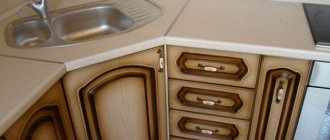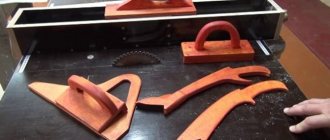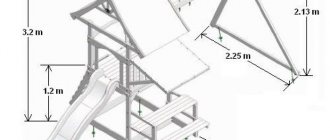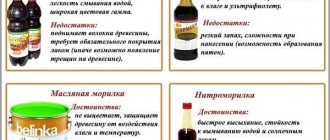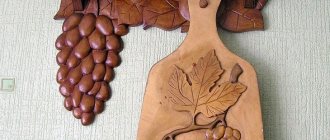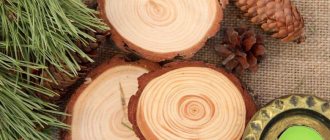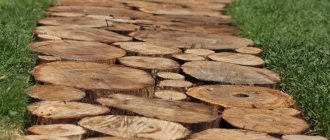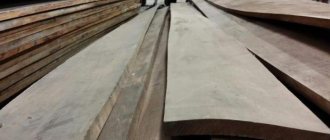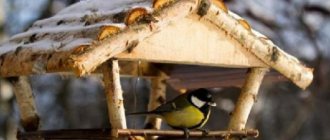Liquid wood is available for free sale, but folk craftsmen still came up with their own way of making liquid wood. DIY liquid tree.
The correct, scientific name for liquid wood is wood-polymer composite. It has excellent appearance and characteristics of wood. But the quality of such material is much higher. Liquid wood, just like regular wood, lends itself well to processing. It can be sawed, planed, processed and nailed. Read more about the production of liquid wood in the article
How wood plastic is made
Liquid wood or wood-polymer composite consists of a wood base encased in plastic. This new combination of ingredients has its benefits. From the wooden base, the product takes on impact resistance, elasticity, and environmental friendliness, and these raw materials are almost free here, since wood flour of any waste is used, from plastic - resistance to rust, mold, insects, flexibility, ease of processing. The polymer envelops the base and protects it from the main enemy - water. Plastic contained in WPC is 90% recycled plastic waste.
This is a unique material that is made from the following components:
- Filler made from crushed timber, which is a waste product from wood processing.
- Polyethylene, polyvinyl chloride and other plastic ingredients that bind it into one mass.
- Lubricators that repel water.
- Modifiers for strength that help maintain shape.
- Colorants for uniform and bright coloring.
- A foaming agent for a flat and smooth surface, at the same time reducing the weight of the finished bar.
- Biocides that prevent the formation of fungus and mold.
The essence of producing composite wood is to mix all the components in one container, after which the mass is heated to high temperatures. As a result, it connects at the molecular level and becomes strong. Then the mass is poured into the blanks under strong pressure and slowly cooled.
Material overview
Main components
The full name of this composition is wood-polymer composite (WPC). This means that the material contains both natural components and polymers, which give the “wood” additional performance properties.
Raw materials and finished products
The structure of the material can be found in the table:
| Component | Peculiarities |
| Polymer base | Depending on the purpose of the composite and the requirements put forward to it, today WPC is produced on three different polymers: Polyvinyl chloride is the most common, durable, but not sufficiently elastic. Polypropylene is wear-resistant, flexible, but more expensive. Polyethylene is the most affordable, but inferior in performance parameters to the previous two. |
| Wood filler | Shredded cellulose fiber or wood shavings are used as filler. As a rule, before processing, wood waste is subjected to primary fermentation, which contributes to better grinding. The more homogeneous the structure of the filler, the higher the strength of its connection with the base, which means the more reliable the composite product will be. |
| Functional and decorative additives | In addition to wood and polymer, liquid wood includes a variety of additives - additives that are noted for additional properties: Pigments - for coloring the mass in the chosen color. Modifiers and hardeners - to accelerate polymerization and increase the mechanical strength of the composition. Lubricants – to facilitate extrusion and obtain a smoother surface of the panels. Antiseptics (biocides) – to prevent the destruction of cellulose filler by microorganisms. |
Technology for obtaining the composition
All these components are mixed together, and after the reaction, manufacturers receive composite raw materials in a molten state (hence the name). The material is then either extruded to make molded parts or packaged in sealed tubes and used as a repair compound to fill defects and voids in wood structures.
Note! Paint—liquid plastic for wood—works on a similar principle: just like a wood-polymer composite, it can be used to eliminate deep scratches, chips, etc.
Advantages and disadvantages
Like any other material, a composite of wood and polymer has both positive and negative qualities.
The advantages of liquid wood are a direct consequence of its composition, since it combines the best qualities of natural wood and polymers:
An artificial tree has an impressive list of advantages
Panels made from this raw material are practically indistinguishable from wood in appearance. In any case, modern extrusion technologies make it possible to imitate texture quite accurately. The products are environmentally friendly and have low thermal conductivity - in these parameters they are not inferior to solid boards. The polymer base reliably protects the cellulose filler from swelling upon contact with water.
Note! When using composite panels in finishing, it is not necessary to apply waterproofing compounds to them, such as liquid glassine for wood.
The use of modern additives provides WPC with a significant margin of strength and wear resistance. The material is not damaged by rodents and woodworms. Plates and panels made of liquid wood are characterized by reduced flammability. The products are easy to process and install using the simplest tools, so the price of finishing work will be identical to their cost when using a regular board.
Advice! For example, for cladding walls with WPC panels, ordinary liquid nails for wood are suitable as fasteners.
Outdoors, the material is not afraid of moisture
As for the minuses, the following should be mentioned here:
When high humidity and high temperature are combined, the material wears out quite quickly, so the composite is not suitable for a bath or sauna. If you carry out the cladding in a room with poor ventilation, the panels will be affected by mold, which is quite difficult to deal with. Composite is much more expensive than wood, so it is irrational to use it for rough work.
WPC products
Extrusion technology allows you to make almost any structure from composite.
However, the following products are in greatest demand:
Wall covered with wood-polymer siding
Wooden terrace boards or decking are multilayer hollow panels that are indistinguishable from natural wood in appearance. They are used for arranging terraces, laying floors outdoors and indoors, etc. Cladding panels (planken) are single-layer plates with stiffeners on the inside. They are almost a complete analogue of vinyl siding, differing from it only in the properties of the material. Fencing details - fences, railings, etc. The structures are light, durable and vandal-resistant, and their service life is many times longer than that of wooden structures.
Photo of a fence made of WPC panels
Note! To seal the joints of parts and protect them from moisture, liquid rubber for wood or a similar composition can be used.
3
How to make WPC with your own hands
Anyone can make a liquid tree with their own hands. To do this you need to do the following:
1. Take sawdust. Moreover, the type of base is not important here - you can take both pine and oak shavings.2. Pour the chopped wood into a coffee grinder (preferably electric) and grind it into “flour.”3. Prepare a mixing container. This could be a basin, a bucket, or a small jar.4. Pour wood “flour” into a container and fill it with PVA glue. Moreover, if you need high strength, use construction compounds or carpentry adhesives based on them rather than office supplies.5. Beat the mixture with a mixer until smooth. For large volumes it can be a construction mixer.
If the composition turns out to be too liquid, you need to add sawdust. If you get a very thick mass, add PVA glue.
True, according to the above recipe, you will not get a full-fledged wood-plastic material, but its analogue. But in terms of structure and basic qualities, homemade material will practically not differ from factory material. It can be used to seal holes, stakes and other defects in real WPC, as well as for casting decorative elements that do not bear the operational load.
Anyone can make a liquid tree with their own hands.
When sealing defects with homemade WPC, the following technology is used: PVA glue is applied to the damaged area and the chip or hole is filled with the resulting mass, using a rubber spatula to grout the joints in the tiles. After hardening, the remaining mass is sanded with fine-grained sandpaper and painted to match the color of the surface.
To pour homemade WPC into a mold, use a liquid composition that resembles the consistency of a concrete solution. Moreover, to squeeze out bubbles from the casting, the filled mold passes through a vibration stand. After which it is left alone until completely dry. Small defects on the surface of the casting can be filled with glue or sanded.
Properties of wood plastic
WPC simultaneously combines the best properties of polymer and wood. It is endowed with the color and smell of natural raw materials. This material has many distinctive characteristics that bring the product to the forefront. The demand for it is only growing, its distinctive features:
- similar to natural wood, but the quality is much better;
- environmentally friendly and safe product without chemical impurities;
- not afraid of mechanical damage;
- ideally preserves the structure during temperature fluctuations from -50 to + 180 degrees;
- is not afraid of insects and is not susceptible to mold and rot;
- no need for painting or additional care;
- not afraid of ultraviolet radiation;
- does not change structure and color when exposed to alkalis and acids;
- it is permissible to process with construction tools, like ordinary timber;
- Thanks to the polymer in the composition, the material can be heated and given the desired shape.
Comparative characteristics of briquettes
| Type of fuel | Calorific value, MJ/kg |
| Anthracite | 26,8-31,4 |
| Brown coal | 10,5-15,7 |
| Coal | 20,9-30,1 |
| Gas | 27 |
| Peat (humidity 20%) | 15,1 |
| Diesel fuel | 42,7 |
| Wood (humidity 40%) | 6-11 |
| Briquettes (from sawdust) | 16-29,5 |
Each type of briquettes has its own characteristics and advantages. And although all of them are excellent for heating in domestic conditions, it is still worth familiarizing yourself with their characteristics in more detail in order to choose the best option.
Forms of fuel briquettes
Wood briquettes
This type of briquettes is obtained by pressing various wood waste - dead wood, sawdust, shavings, substandard wood. Before pressing, the waste is heated to a certain temperature, as a result of which an adhesive substance, lignin, is released from the cells. Thanks to lignin, briquettes acquire high strength and retain their shape during transportation and storage.
Wood briquettes
The advantages of briquettes over solid wood are obvious:
- the density of briquettes is constant and amounts to 1240 kg/m³, the density of wood depends on the species and ranges from 150-1280 kg/m³;
- maximum humidity of briquettes is 10%, wood – from 20 to 60%;
- when burning a briquette, the volume of ash is 1% of the total mass, wood - 5%;
- when burning, a briquette emits 4400 kcal/kg, wood - 2930 kcal/kg.
In addition, wood briquettes have other advantages:
- pressed wood does not spark when burning and emits very little smoke;
- a constant temperature is maintained in the boiler;
- briquette burning time 4 hours;
- the coals remaining after combustion are excellent for cooking over an open fire;
- the correct shape of the briquettes simplifies their transportation and storage.
Such fuel is sold not in cubic meters, like wood, but in kilograms, which is much more profitable.
Prices for Eurofirewood Briquettes
Eurofirewood Pini-kay
Coal briquettes
Coal briquettes
This type of briquettes is obtained from screening out coal. First, the screenings are crushed, mixed with a binder, and then compressed under high pressure.
The main properties of such fuel:
- coal briquettes do not smoke;
- do not emit carbon monoxide;
- burning time in conventional boilers is from 5 to 7 hours, with controlled air supply – 10 hours;
- suitable for use in domestic conditions;
- have a compact shape;
- when burning they release 5200k/cal and maintain a constant temperature;
- maximum ash volume – 28%;
- have a long shelf life.
Coal briquettes are the most optimal fuel in harsh winters, when pressure drops in domestic gas systems due to low temperatures. Briquettes burn at any temperature, the main thing is that there is a constant flow of air.
Prices for WEBER coal briquettes
WEBER coal briquettes
Peat briquettes
Peat briquettes
To make briquettes, peat is dried, heated and pressed under high pressure. The result is neat, light, dark-colored bricks. With an adjustable air supply, peat briquettes maintain the temperature for 10 hours, which is very convenient for heating the house at night.
Basic properties:
- suitable for all types of ovens;
- heat transfer is 5500-5700 kcal/kg;
- ash volume 1% of the total volume of the briquette;
- affordable price;
- minimum amount of impurities in the composition.
The ash that remains after fuel combustion can be used as an effective lime and phosphate fertilizer. For many owners of private households, this factor is decisive when choosing heating briquettes. Since peat is a flammable substance, it should be stored at a safe distance from open fire and heating devices. Even dust spilled from the packaging can ignite and cause a fire, so briquettes must be handled correctly.
Husk briquettes
Husk briquettes
Sunflower husks, buckwheat and rice husks, rye waste, oats and even straw are widely used to make fuel briquettes. The most common are briquettes made from sunflower husks, since the production of oil leaves a large percentage of waste. The maximum moisture content of husks for pressing is 8%, which increases heat transfer and reduces combustion time.
Sunflower briquettes
Specifications:
- briquette density is 1.2 t/m³;
- heat transfer – 5200 kcal/kg;
- ash volume from 2.7 to 4.5%.
Additional benefits:
- absence of harmful impurities;
- affordable price;
- long burning time;
- ease of storage and transportation.
Advantages and disadvantages of building materials
Composite wood has become widespread among buyers. It combines the best qualities of natural raw materials and polymer resistance to mechanical damage.
If we compare the wood-polymer composite with natural components, it has several advantages:
- excellent moisture-resistant properties;
- resistant to temperature changes in the range from +180 to –50 degrees;
- withstands mechanical stress;
- mold does not form and is not damaged by insects due to antibacterial components;
- easy and quick installation;
- no need to varnish or paint, easy to clean;
- durability, lasts more than 25 years;
- takes a variety of shapes;
- presented in a wide range of colors;
- resistant to aggressive detergents;
- recyclable;
- It costs much less than natural raw materials, but is not inferior in quality.
Disadvantages of wood plastic:
- cannot be installed in places with high humidity and elevated temperatures;
- additional ventilation will be required.
Areas of use of liquid wood
The scope of application of wood polymer is gradually expanding. It is used in the production of the following products.
- Double-layer parquet. The size of such tiles is 3x3 meters, thickness from 25 to 55 mm. The first layer is a polymer, and the second is a wooden base, which is attached to the substrate with small screws. This type of parquet is used to cover a garden plot and an open terrace.
- Siding for the exterior of a house.
- Terrace board or decking. It is suitable for floors and car parking, and has found application in lining marinas, ship decks and piers.
This innovative building material is used in the design of residential and public premises and construction. This coating will not wear off, crack, chip, or mold from rain and snow. Wood-plastic can be used to make blanks for furniture that can withstand heavy loads.
Wood in combination with plastic goes well with brickwork, plasterboard and concrete.
Selection of WPC products
Before you buy this product, you need to know how to choose it correctly, otherwise there is a possibility of purchasing a low-quality product. What to look for when purchasing:
- If there are light particles on the board, then the composition contains bad wood dust that is not crushed enough. It does not have good moisture-resistant properties; water will gradually accumulate on the surface and destroy the product.
- When purchasing a wood-polymer composite, in addition to the shade, you need to pay attention to the texture. Wood polymer that is too polished and shiny is not suitable for flooring because it is very slippery.
- The color indicates the good or low quality of wood plastic. If the composition is poorly mixed during production, then streaks, spots, and uneven coloring appear on the surface.
- Wood plastic will be of high quality if hardwood flour is used in the manufacturing process. Coniferous flour makes the product less stable and increases its flammability.
When purchasing, you should give preference to well-known manufacturers.
How to make composite wood yourself
It happens that you have to repair furniture made of chipboard at home, or the parquet tiles are cracked, the laminate has crumbled, then wood-plastic will come to the rescue. It’s not difficult to make it yourself; for this you will need:
- sawdust;
- PVA glue.
Master class on making wood polymer with your own hands:
- Grind the sawdust into flour; this works especially well in a regular coffee grinder.
- Mix wood dust with glue to a paste-like consistency.
- Choose the appropriate color of dye and squeeze it into the mass. Select the color for the water-based emulsion.
- Cover the damaged area and wait until it dries completely, then sand it with sandpaper.
In this simple way you can reanimate broken and damaged furniture.
Wood plastic is an excellent alternative to natural wood with improved characteristics, environmental friendliness and low cost. The product is widely used in the decoration of private houses, terraces and garden plots.
When does it make sense to produce fuel briquettes?
Mini-machine that makes briquettes.
Making fuel briquettes with your own hands, as shown in the video above, is only profitable when you have free sawdust. But even so, this event is not always advisable. For example, you have your own woodworking plant that needs to be heated. It’s just inconvenient to throw sawdust into the stove, and it doesn’t burn properly. In this case, it makes sense to buy a machine and stamp briquettes on it for your needs. The quality of the products will be acceptable, and you will save on heating costs. In this case, making briquettes manually is too troublesome, since a lot of energy is needed.
For heating a private home, homemade briquettes are also not the best option and here’s why:
- low quality due to the use of homemade presses;
- production requires a lot of time and effort.
This is if you don’t take into account the fact that you also need to make the press yourself. In addition, briquettes may not work out. An unpleasant surprise may await you after drying - the bricks sometimes simply fall apart. The point of self-production is when you want to make several cubes of briquettes to sometimes heat your dacha. But again, if you have your own sawdust and you are willing to spend several days on it.
